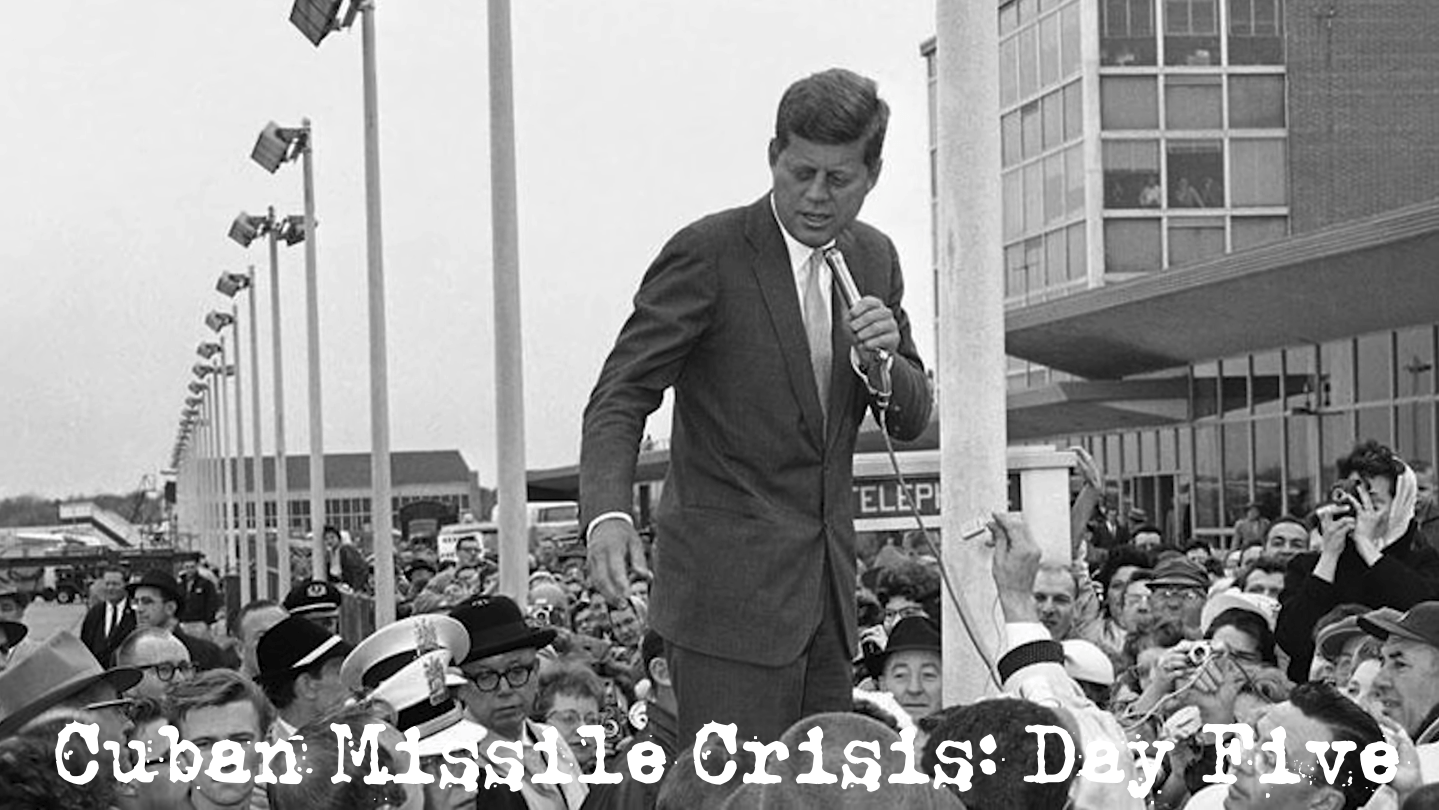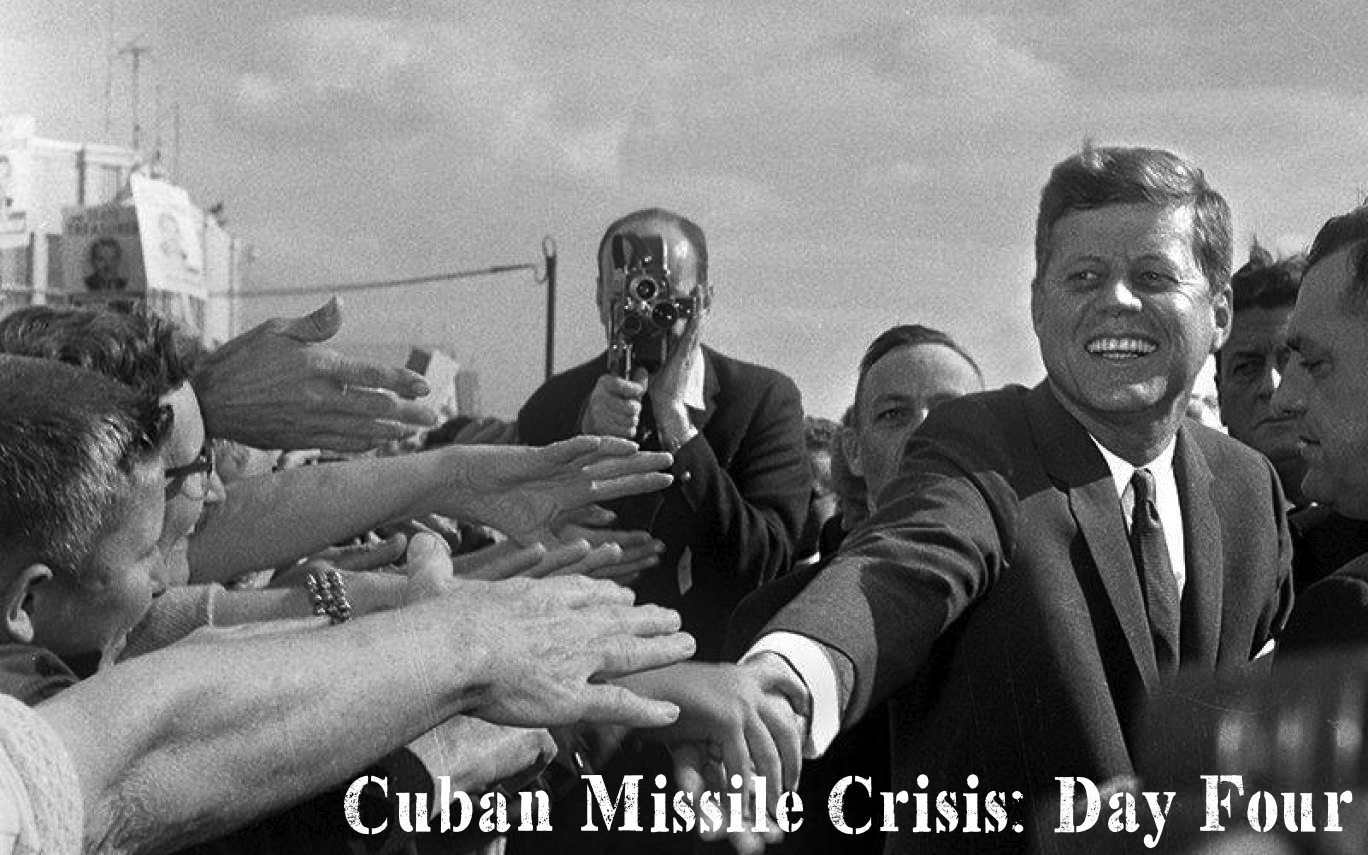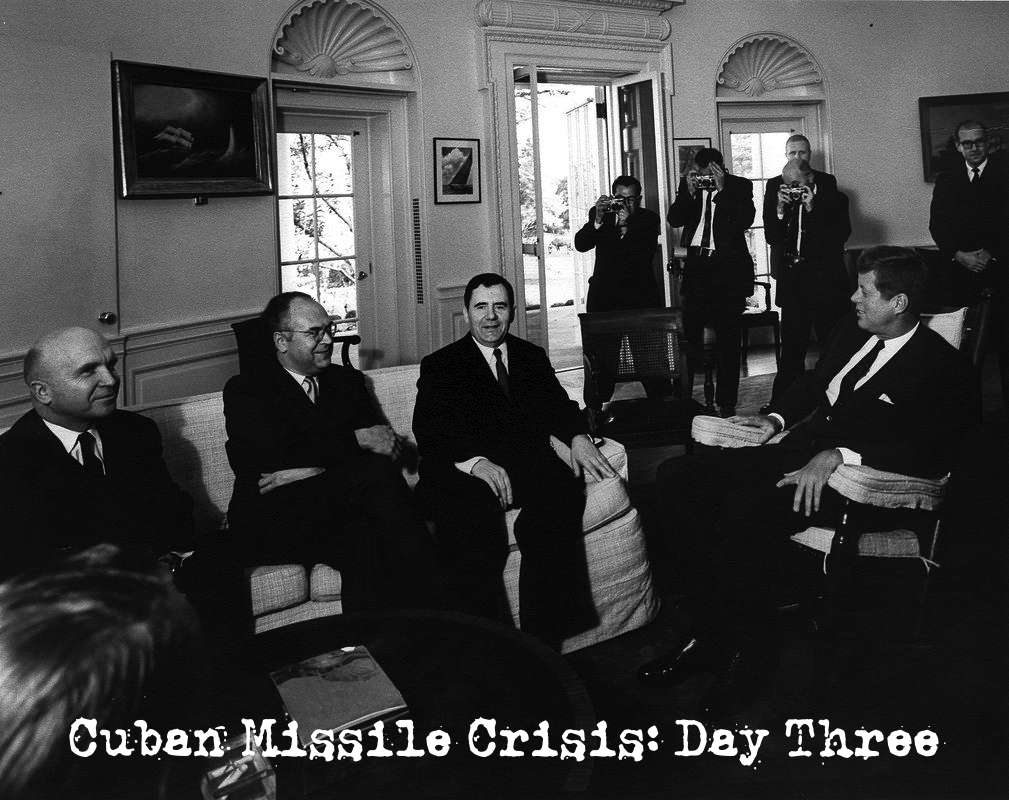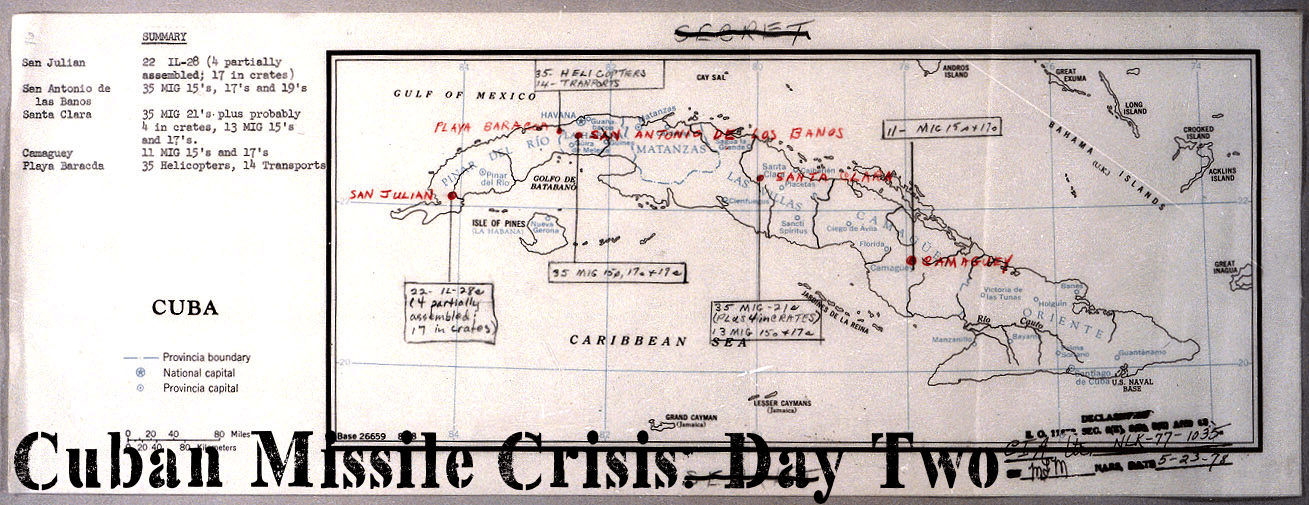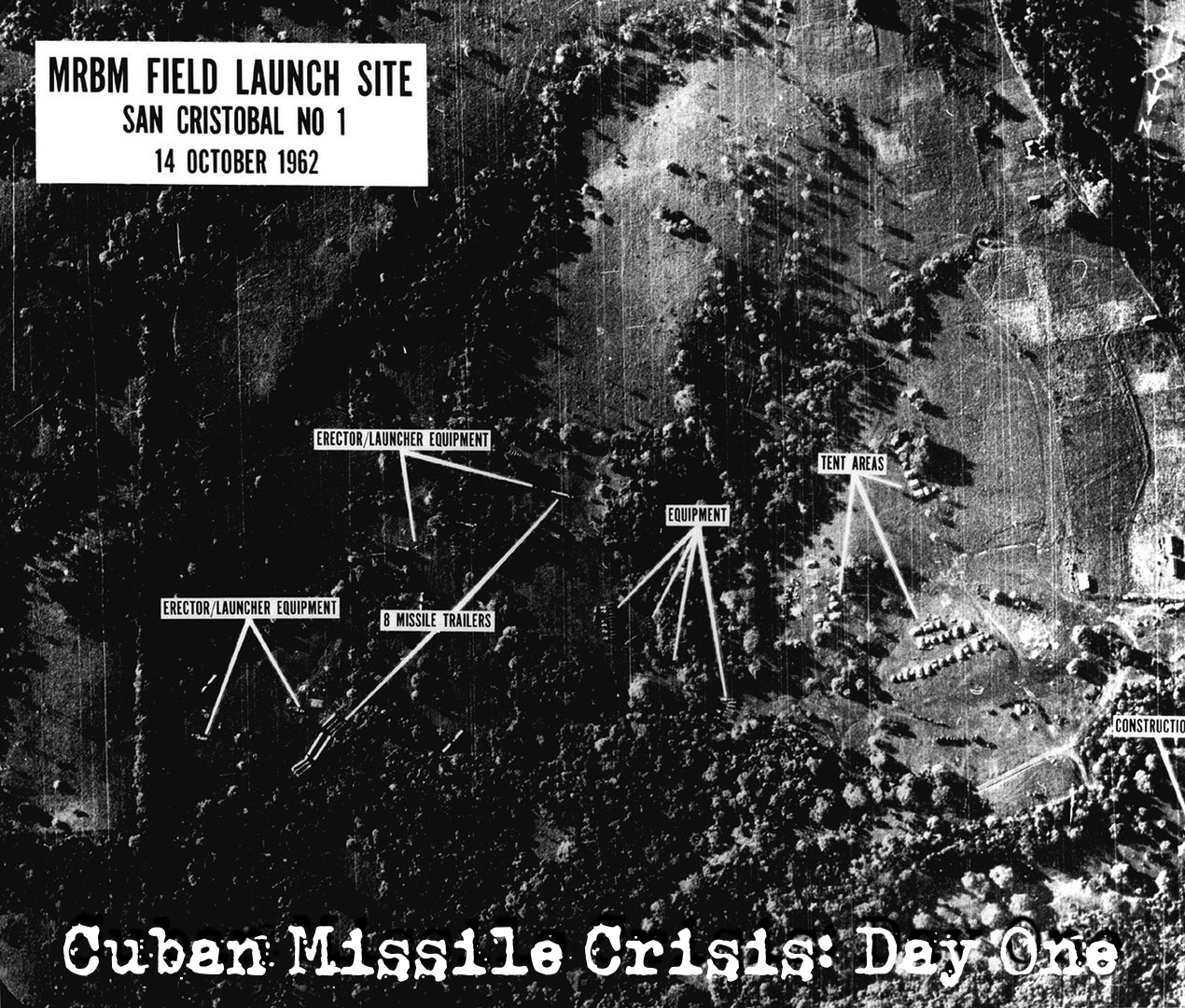Cuban Missile Crisis: Day Five
Cuban Missile Crisis: Day Five “I had heard the military take positions, which if wrong, had the advantage that no one would be around at… Read More »Cuban Missile Crisis: Day Five
Cuban Missile Crisis: Day Five “I had heard the military take positions, which if wrong, had the advantage that no one would be around at… Read More »Cuban Missile Crisis: Day Five
Cuban Missile Crisis: Day Four Friday, October 19, 1962: President Kennedy leaves for a scheduled campaign trip to Ohio and Illinois. In Washington, his advisers… Read More »Cuban Missile Crisis: Day Four
Cuban Missile Crisis: Day Three Thursday, October 18, 1962: President Kennedy met with Soviet Foreign Minister Andrei Gromyko (yes, Thirteen Days states this happened on Wednesday, the… Read More »Cuban Missile Crisis: Day Three
Cuban Missile Crisis: Day Two Wednesday, October 17, 1962: American military units begin moving to bases in the Southeastern U.S. as intelligence photos from… Read More »Cuban Missile Crisis: Day Two
Cuban Missile Crisis: Day One At 8:45 AM on Tuesday, October 16, 1962, President Kennedy, still in his pajamas, had his breakfast interrupted by National Security… Read More »Cuban Missile Crisis: Day One
